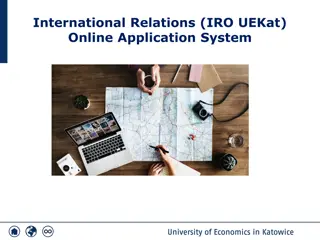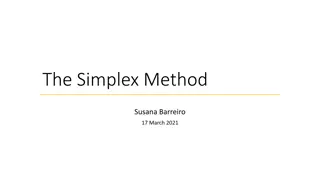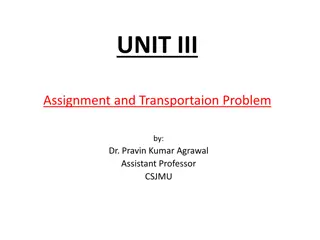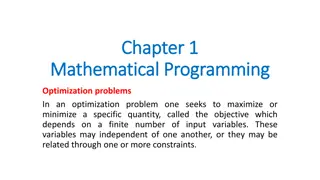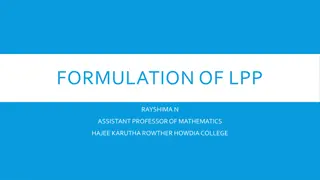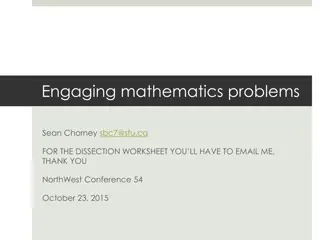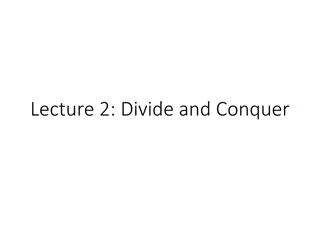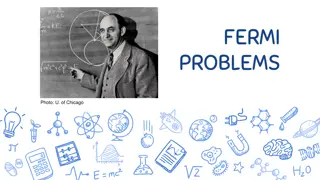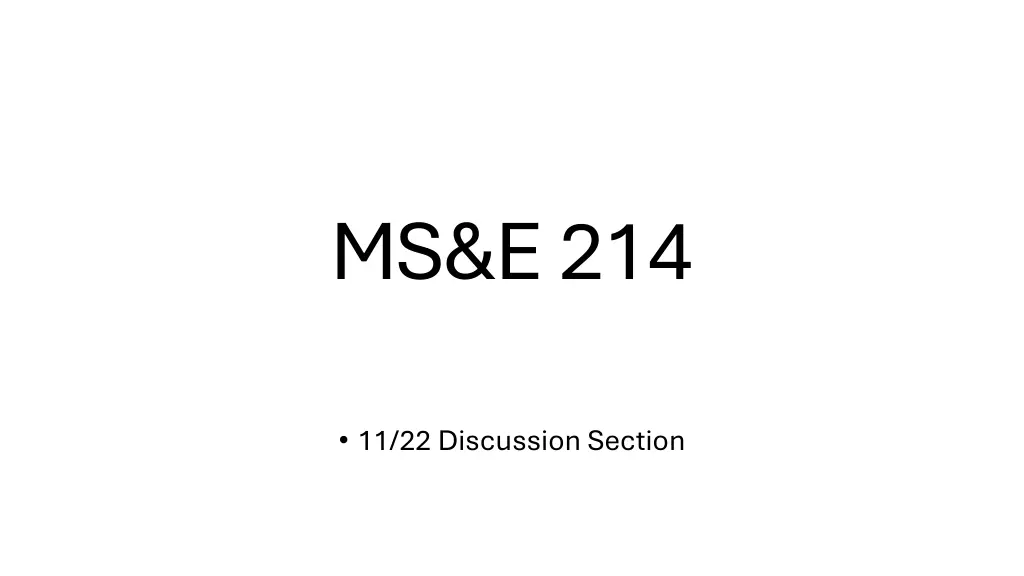
Optimizing Production Schedules with Min-Cost Flow Modeling
"Explore how small manufacturing companies can minimize costs by using min-cost flow modeling to determine production schedules. Dive into scenarios like non-matching supply/demand and learn how to adapt the model accordingly for efficient decision-making."
Download Presentation

Please find below an Image/Link to download the presentation.
The content on the website is provided AS IS for your information and personal use only. It may not be sold, licensed, or shared on other websites without obtaining consent from the author. If you encounter any issues during the download, it is possible that the publisher has removed the file from their server.
You are allowed to download the files provided on this website for personal or commercial use, subject to the condition that they are used lawfully. All files are the property of their respective owners.
The content on the website is provided AS IS for your information and personal use only. It may not be sold, licensed, or shared on other websites without obtaining consent from the author.
E N D
Presentation Transcript
MS&E 214 11/22 Discussion Section
Problems using MCF/Max-flow 1.Production problem 2.MCF with non-matching supply/demand 3.Matrix rounding example 4.Probability of failure (modelling)
Production problem A small computer manufacturing company forecasts the demand over the next n months to be di, i = 1, 2, . . . , n. In any month it can produce r units, using regular production, at a cost of b dollars per unit. By using overtime, it can produce additional units at c dollars per unit, where c > b. The firm can store units from month to month at a cost of s dollars per unit per month. Formulate the problem of determining the production schedule that minimizes cost. Show how this problem can be solved as a min-cost flow problem.
Non-matching supply/demand Class question: What if the total demand is not zero? Eg. what if it is bigger than 0, i.e. the demand is smaller or bigger than the supply ? Formal question: Consider a variant of the min-cost flow problem where any excess supply can be discarded at no cost (free- disposal)? Or at the cost of L per unit? How can you model this case as the standard min-cost flow considered in class?




